ROB SHANER REMEMBERS WALKING BY THE SPACE at Damen and Charleston when he worked a block north at The Bristol. It had been Meritage, one of the first restaurants to put Bucktown on the map as any sort of place to go eat dinner, but was Duchamp by the time The Bristol opened. “I thought it was such a killer location,” he said. Though the style of food at Duchamp didn’t appeal to the militantly farm to table cooks at The Bristol: “That was always a conversation at The Bristol, imagine having that spot but with good food.”
After Duchamp it was Red Door, which closed at the end of 2016. Now it’s The Royal Grocer & Co., and Shaner, most recently at Homestead in West Town, is the chef. What he’s doing there isn’t exactly like what The Bristol does, but it isn’t exactly not like it, either. Not least because The Bristol cracked the code on being a Bucktown neighborhood restaurant that could do some pretty daring, cutting-edge things and still pack the place with people just looking for a roasted chicken or some pasta.
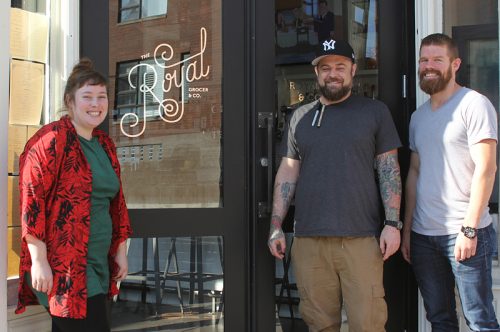
Sous chef Maureen Neer, chef Rob Shaner, owner Michael Hartman
“Chris Pandel had this formula at The Bristol that you had the mainstays, you had the roast chicken, you had the monkey bread. And then he would throw some offal on that was not very approachable,” Shaner said. “It’s finding that happy medium where you can attract people who want an experience. I want an experience, and when I cook, my whole purpose is learning. If I’m not learning, I get bored.”
“But I know a lot of people aren’t that way when they eat. So it’s a matter of trying to fill peoples’ bellies with something super approachable, like gnocchi and fried chicken, and having that other side, where we can be a bit more creative. It’s not about what I want to do, although I can’t get bored. But you have to make other people happy.”
“We’re not artists,” said Maureen Neer, Shaner’s sous chef. “We have to make the community happy.”
CONTRARY TO MY HEADLINE, YOU MAY HAVE heard of The Royal Grocer & Co.—it got the usual opening publicity that a restaurant like this gets for about a week, before its news is buried under the crushing weight of the ten places that open immediately after it. But after 2-1/2 months in business, no one has reviewed it; no one has profiled Shaner; no one has made a fuss over its most striking dish, a pasta made from radishes (in hot pink no less).
I met with Shaner, Neer and owner Michael Hartman on one of those 90-degree October days, when the building’s best feature—a large garden dining area—was still usable. The first thing that struck me was that Shaner and Neer both came out to the garden for the interview; it’s rare, as in I can’t think of many other times offhand, for a chef to invite his sous chef to sit in for publicity, but the lack of ego Shaner takes to making food work for the neighborhood seems to apply to his team, too. He met Neer when both were working for The Fifty/50 Group: “She and I had good working chemistry, and we both had similar tastes in food,” he explained.
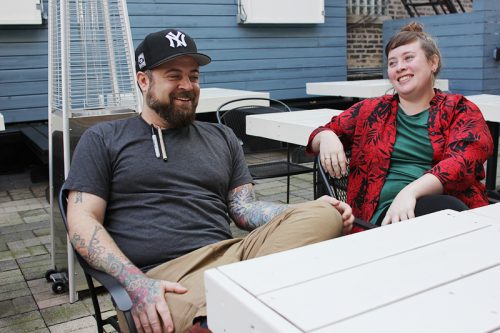
The garden is one of the first challenges any restaurant in the space has to face—for maybe four or five months you’re a restaurant in a garden, the rest of it you’re huddled in a small bar. Shaner said, “I had that limitation at Homestead, especially with it being hidden away, so I felt I had already faced that challenge. My thought there was to create a comfortable space inside. I lived in France for a while growing up, so to me it’s like going up to the Alps to the little chalets there.”
So his approach is shaped, first, by the fact that the space really makes two different restaurants out of whatever you open there. Shaner said, “I love working with the seasons. In the summertime I lean more toward kind of Japanese ingredients. But then fall and winter is straight into French comfort foods, heavy sauces, just finding that happy place.”
Neer, who was responsible for the other of the dishes that most captivated me (besides the radish pasta), a cauliflower Gobi Manchurian that tasted, in all the best possible ways, like Panda Express’s Orange Chicken, has her own philosophy: “I very much like comfort food, food that reminds me of my childhood.”
“I think we’re about 100% nostalgic,” Shaner said.
“Yeah, very hedonistic,” Neer said. “I don’t care if it’s healthy or not, though if it’s healthy that’s great.”
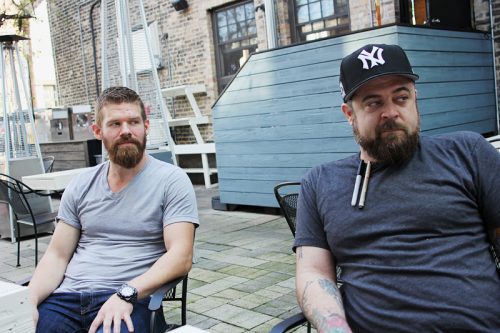
As they talked through the items on the menu, at first they stressed the comfort food side of things—like fried chicken. “My number one food is a perfectly roasted chicken,” said Shaner. “But in order to do that with the space limitations here, and also with the demographic—I knew that there were people who, you could give them the greatest roasted chicken in the world and they’d be like, ennh. Fried chicken, on the other hand, I knew was a crowd pleaser.”
“I’d say that’s a heavy influence on both of us, southern comfort food,” Neer said.
Is Bucktown ready for this? “We’re still trying to figure out what the neighborhood is ready for, what they’re willing to accept.”
“I was born in southern Missouri, right near the border, so I had terrible food growing up. My mom’s a horrible cook,” Shaner said.
“Same,” said Neer. “That’s why I started cooking.”
“The first time I understood how great food could be was the first time I had barbecue down there. That’s my first reference point of fantastic food,” said Shaner.
“As someone who’s after the best tasting food, I want the best ingredients, like the Green Circle chicken, which is way better than a supermarket chicken,” said Neer.
“Most of our grains are from Anson Mills, our country ham is from Colonel Newsom’s,” said Shaner.
You could just about buy that this is a southern-oriented, comfort food kind of place, which makes a lot of sense in their neighborhood corner bar location. But then Shaner started to explain… the radish-based, bitter and slightly pungent, outrageously pink pasta, and how it came to be—how it came to capture exactly the taste of a pasta sprinkled with parmesan, without any cheese. The kind of trick you see on a three-figure tasting menu.
“Between May and late August, all I can think of is the ocean, it’s a complete obsession,” he said. “I just wanted a dish that would capture that, I wanted you to eat it and taste all the high points of it, capturing that umami flavor of seafood. But I wanted it to be very humble in terms of the central ingredient.”
He read about a rutabaga pasta that a chef in New York made, and he got the idea of making pasta from radishes; he mixed up the dough and put it through a sheeter. “I was trying different dashis,” Japanese vegetable broths, “and I made one with uni. I was blown away by the parmesan taste that came from it. Yet at the same time, capturing that central sea and umami flavor.”

Radish pasta with uni butter, grilled radish, dashi, smoked char roe
Pasta from a root vegetable instead of flour, the taste of cheese from a sea creature, and dotted with Arctic char roe—it sounds like high end restaurant experimentation, not anything you’d expect to see at a corner bar. Yet to Shaner, it’s also a dish that’s rooted, accessible. “You could have the most plain Jane person come in and they’d probably think it sounded awful, but if you somehow convince them to order it, it’s a recognizable flavor for them—it’s not this weird fuckin’ sea urchin thing,” he said.
And if that’s not enough, then they got to talking about a risotto on the menu. It starts out Southern again—it’s made from Carolina Gold rice (“It’s so easy to overcook risotto because you get the creaminess, and then it falls apart and it’s mush. But with the Carolina Gold rice, it’s incredibly starchy, you can get that cream and maintain the tooth,” said Shaner.)
Then we got to… lichen.
Shaner said, “We went to Rare Tea Cellar, Rodrick [Markus] had a bag of lichen, he opened it, and you were immediately taken to the woods. I made a note that I wanted to work with this. So I rehydrated it, I made a broth, I was going to do a risotto with a porcini-lichen broth—”
Not just lichen. Lichen broth.
“—and it was awful, Incredibly bitter, inedible. So then I’m like, I have a pound of these dried lichens, which is a lot of lichen. What am I going to do?” Well, what you do at that point, if you’re in a high end restaurant and not just a corner bar, is you see what one of the Nordic chefs who are so hot right now does with lichen. He found a reference to it from Magnus Nilsson of Fäviken: “Traditionally, when people had eaten it, they cured it in ash, the alkali in the ash took the bitterness out. So we just started screwing around and I made a brine with potassium carbonate and baking soda.”

“And then we made meth,” said Neer.
“So now we’re all wealthy,” said Shaner, laughing. “Once we cured the lichen, it was all right there.”
Neer said, “You had this smell of walking in the woods. Of decomposing leaves and wet earth. It was so compelling, everything that you love about walking in the woods.”
Okay, now I want to try it. But I still have to wonder—is Bucktown ready for porcini-lichen risotto?
“That’s the question. I mean, the Bristol’s pulled it off,” Shaner said.
Need added, “We’re still trying to figure out what the neighborhood is ready for, what they’re willing to accept. I think we’re executing that on off-menu nights—like on Tuesday I did a cheeseburger, because who doesn’t love a good cheeseburger? I have no shame about that, because it’s something that I genuinely love.”
“I don’t want us to come off as like these pretentious types who are making all this food that you people just don’t get. It’s not fussy food. We’re not tweezin’ and squeezin’ every little micro green,” Neer said.

WHAT BUCKTOWN IS READY FOR IS THE QUESTION that has to be on the mind of owner Michael Hartman, since he’s already been through this once. His first bar was downtown’s Stocks & Blondes, which he calls “a neighborhood bar in the Loop,” and from there his ambitions led to a place called The Temple Bar, on Ashland.
“We tried to do a gastropub, with craft cocktails. It wasn’t necessarily well received,” he explained. “Over there, we stuck to our guns, why wouldn’t anybody like that? But we saw a change in the neighborhood—when we started Temple it was younger kids, people were able to find affordable rents,” and thus there was a crowd that would go out for fancy cocktails. “But then that transitioned very quickly into high end homes and single families. The ability of people to go out just wasn’t there any more.”
He could have retrenched, played it safe, but like his chef, Hartman said, “If you’re not challenging yourself creatively, you’re stagnant.” After Red Door closed, the landlord showed him the building, built as a tavern in 1890, and he found that in around 1929, it was a grocery called The Royal Blue Grocer & Co. Because someone else was using that name in Texas, he had to drop the “blue,” but he liked how the name fit what his chef was planning to do: “It fell right in line with the idea that you’re working with local purveyors, that you’re seasonal—if it wasn’t in season in 1929, you wouldn’t get it.”
Hartman has built the bar program around the same principles as the food—local, seasonal, but not hardass about it. “We’ve tried to team up with local brewers, to have one beer in every style. The cocktails are seasonal—it’s fall, so we’re bringing in apple, we’re bringing in cinnamon. We try to use smaller, handcrafted spirit brands—because of the neighborhood we have to keep big names like Tito’s, because it’s a call, but primarily our cocktails use those ingredients.”
In general Hartman trusted that if they make good food and drinks, people would want to eat and drink them. He said that at the friends and family dinners before opening, he sent out the radish pasta, to see what peoples’ reaction would be—if anyone would eat it. “90% of the time I sent out that dish, they might have been hesitant, but as soon as they had it, it just blows their mind.”

IN THE END, SHANER POINTS TO THE EXAMPLE just up the street again. “I’ve worked at a lot of restaurants for a lot of different chefs. Pandel is really the one who informed my cooking the most, hands down. His understanding of what’s delicious, without adding too many elements—he can do three ingredients, and put them together like nobody else can do. His use of acid—he taught me the last thing you do before service is, you cut three lemon cheeks. But just in a lot of ways, working for him really informed my cooking. And really, how to run a kitchen, how to treat your staff, things like that.”
“Badly, lots of yelling,” joked Neer.
“Lots of yelling, throwing stuff,” chimed in Shaner. “But when I was there, all the cooks who had opened it hung around, and everyone in his own right could be running his own restaurant, and they hung around because they believed in it. They stayed there because they all had a common vision.”
“Sort of how I feel—our team is really solid and we all get along,” said Neer. “I think that kind of kitchen community is super important. Nobody wants to get yelled at.”
Not if you want to get along with your neighbors, for sure.
Ed. Note: Rob Shaner and Maureen Neer are no longer involved with the restaurant, as of early December.
Michael Gebert is editor at Fooditor, which is part lichen, part cheeseburger.
H/t KennyZ
Latest
Join the Discussion
After you comment, click Post. If you're not already logged in you will be asked to log in or register with Disqus.





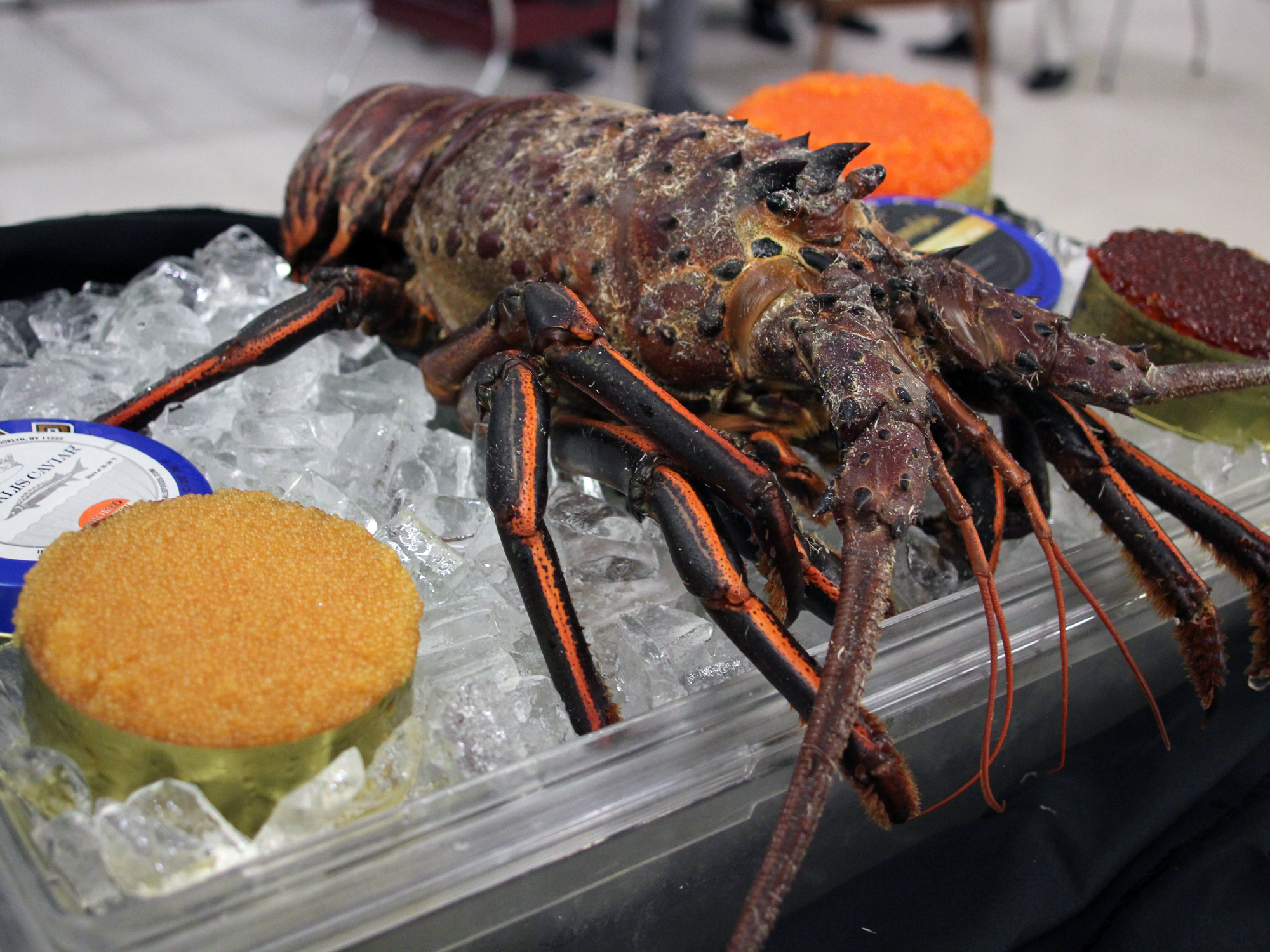
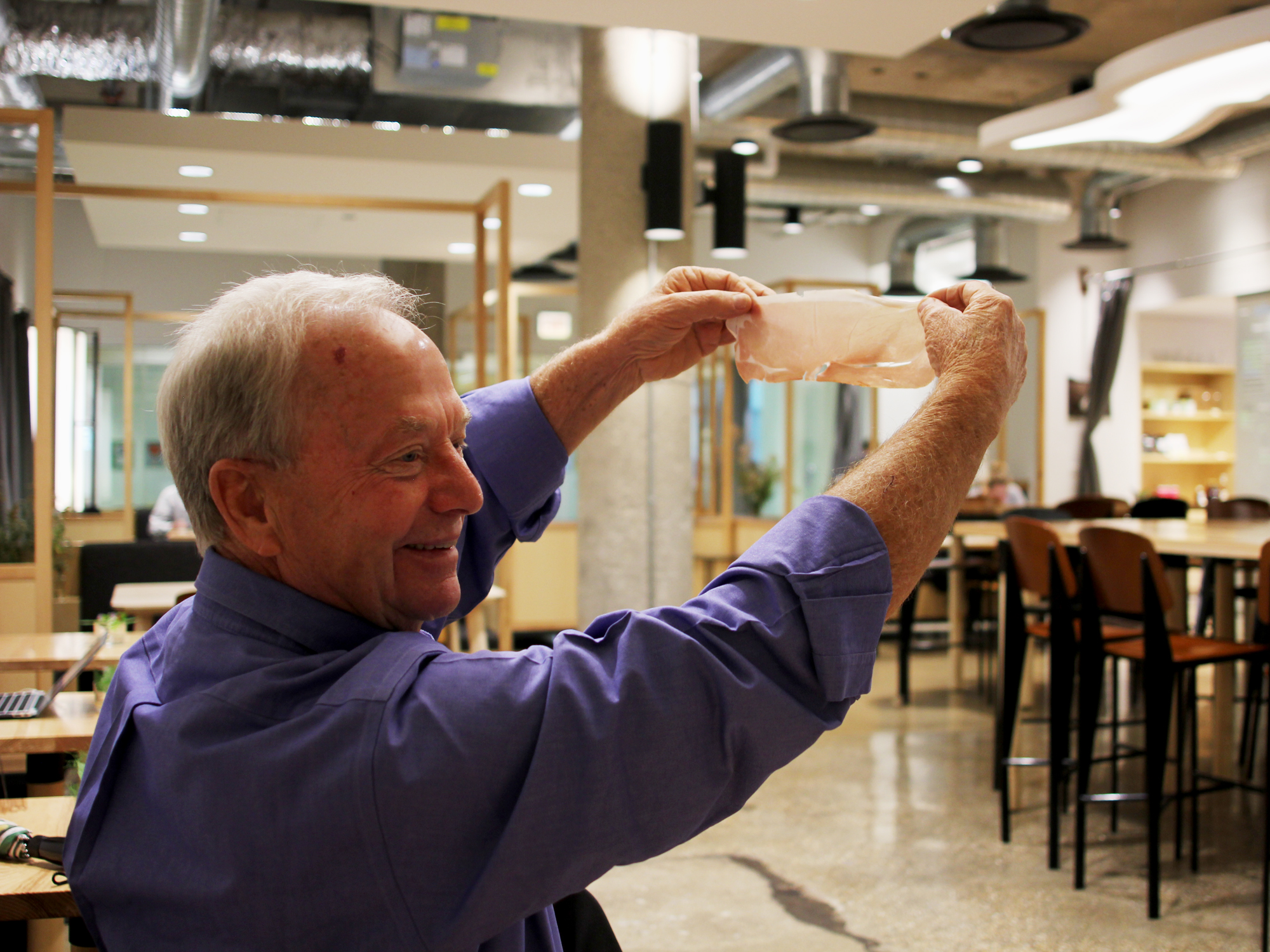
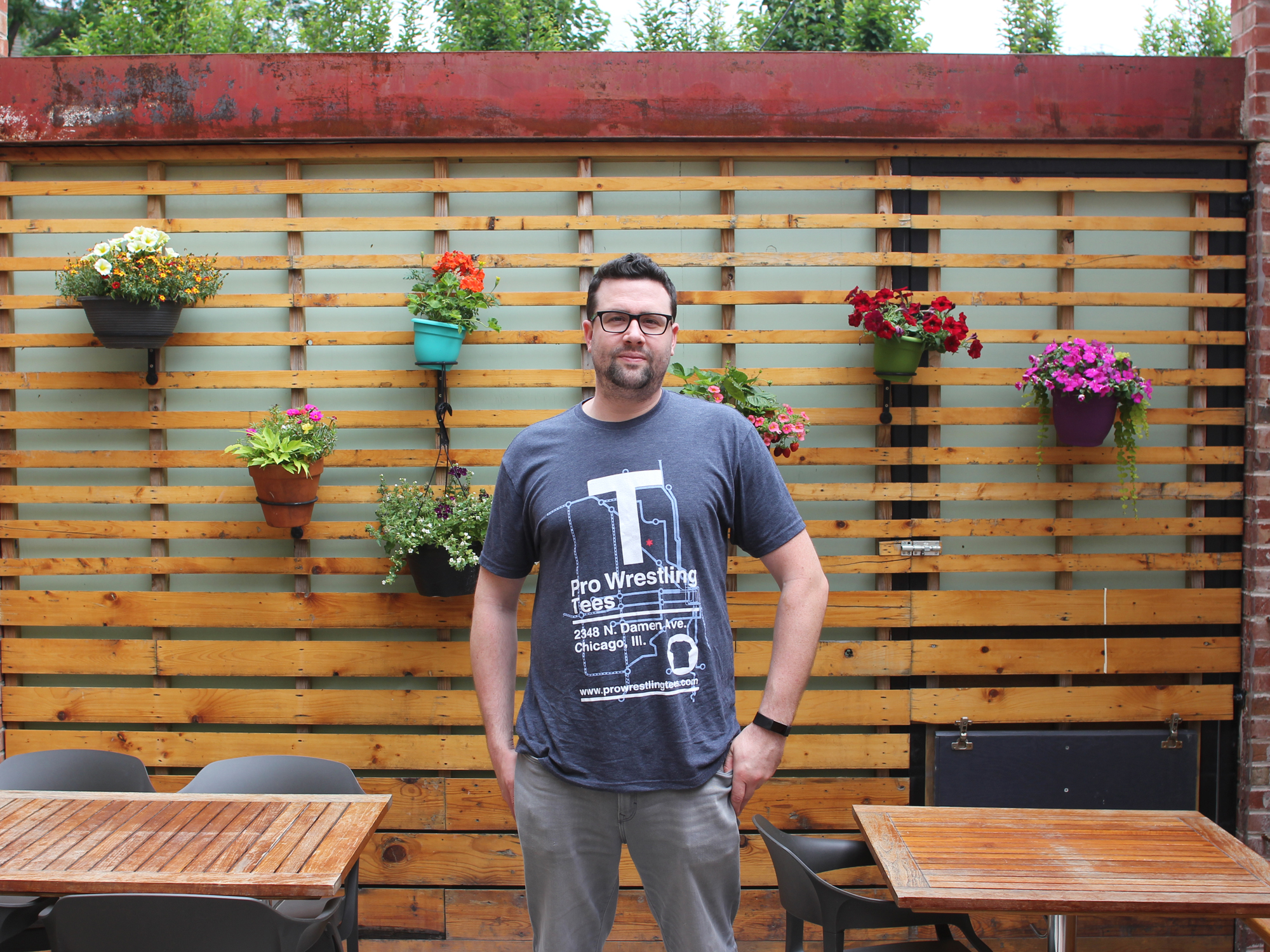
Thanks for the wonderful write up Michael.